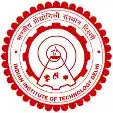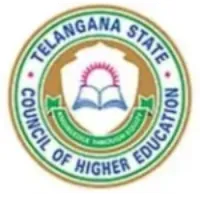Latest Applications Open 2024:
The IIT JAM Biotechnology Chemistry Syllabus for 2025 will be officially published online by the IIT JAM 2025 authority, allowing students to access and download it in PDF format. The IIT JAM, administered by IIT Delhi in collaboration with the Indian Institute of Science, is a prestigious entrance exam for admission to Masters of Science and Technology programs. Candidates need to refer to the syllabus and other study materials available in PDF format to prepare effectively for the upcoming exam.
Students can download the IIT JAM 2025 Syllabus in PDF format. The IIT JAM is known as the India Institute of Technology, and the Indian Institute of Science may offer the Joint Admission Test for Masters of Science and Technology. IIT Delhi conducts the IIT JAM 2025 Exam.
Latest Applications For Various UG & PG Courses Open 2024
-
- Parul University | Admissions Open for All Courses 2024. Apply Now
- Chandigarh University | Admissions Open for All Courses 2024. Apply Now
- IIAD, Delhi | Admissions Open for All Courses 2024. Apply Now
- GIBS, Bangalore | PGDM Applications Open. Package upto 15.5 LPA. Apply Now
- GNIOT, Greater Noida | Admissions Open for All Courses 2023. Apply Now
- The Design Village | Admissions Open for All Courses 2024. Apply Now
- IMS Ghaziabad UC Campus | Admissions Open for All Courses 2024. Apply Now
- KIIT School of Management | Admissions Open for All Courses 2024. Apply Now
- KSRM | Admissions Open for All Courses 2024. Apply Now
- Jaipuria Institute of Management | Admissions Open for All Courses 2024. Apply Now
- NIIT | Admissions Open for All Courses 2024. Apply Now
- MITWPU | Admissions Open for All Courses 2024. Apply Now
- KL University | Admissions Open for All Courses 2024. Apply Now
- Alliance MBA | Admissions Open for All Courses 2024. Apply Now
- Alliance UG | Admissions Open for All Courses 2024. Apply Now
- GD Goenka | Admissions Open for All Courses 2024. Apply Now
For better preparation, Candidates can also Download other Syllabus in PDF format. Check below details related IIT JAM Biotechnology Chemistry Syllabus.
Physical Chemistry
- Basic Mathematical Concepts: Functions; maxima and minima; integrals; ordinary differential equations; vectors and matrices; determinants; elementary statistics and probability theory.
- Atomic and Molecular Structure: Fundamental particles; Bohr’s theory of hydrogen-like atom; wave-particle duality; uncertainty principle; Schrödinger’s wave equation; quantum numbers; shapes orbitals; Hund’s rule and Pauli’s exclusion principle; electronic configuration of simple homonuclear diatomic molecules
- Theory of Gases: Equation of state for ideal and non-ideal (van der Waals) gases; Kinetic theory of gases; Maxwell-Boltzmann distribution law; equipartition of energy.
- Solid-state: Crystals and crystal systems; X-rays; NaCl and KCl structures; close packing; atomic and ionic radii; radius ratio rules; lattice energy; Born-Haber cycle; isomorphism; heat capacity of solids.
- Chemical Thermodynamics: Reversible and irreversible processes; first law and its application to ideal and nonideal gases; thermochemistry; second law; entropy and free energy; criteria for spontaneity.
- Chemical and Phase Equilibria: Law of mass action; Kp, Kc, Kx, and Kn; effect of temperature on K; Ionic equilibria in solutions; pH and buffer solutions; hydrolysis; solubility product; phase equilibria–Phase rule and its application to one-component and two-component systems; colligative properties.
- Electrochemistry: Conductance and its applications; Transport number; Galvanic cells; EMF and free energy; concentration cells with and without transport; polarography; concentration cells with and without transport; Debey-Huckel-Onsager theory of strong electrolytes.
- Chemical Kinetics: Reactions of various order; Arrhenius equation; collision theory; transition state theory; chain reactions – normal and branched; enzyme kinetics; photochemical processes; catalysis.
- Adsorption: Gibbs adsorption equation; adsorption isotherm; types of adsorption; a surface area of adsorbents; surface films on liquids.
- Spectroscopy: Beer-Lambert law; fundamental concepts of rotational, vibrational, electronic and magnetic resonance spectroscopy.
Organic Chemistry
- Basic Concepts in Organic Chemistry and Stereochemistry: Electronic effects (resonance, inductive, hyperconjugation) and steric effects and their applications (acid/base property); optical isomerism in compounds with and without any stereocenters (allenes, biphenyls); confirmation of acyclic systems (substituted ethane/n-propane/n-butane) and cyclic systems (mono- and di-substituted cyclohexanes).
- Organic Reaction Mechanism and Synthetic Applications: Chemistry of reactive intermediates(carbocations, carbanions, free radicals, carbenes, nitrenes, benzynes, etc…); Hofmann-Curtius-Lossenrearrangement, Wolff rearrangement, Simmons-Smith reaction, Reimer-Tiemannreaction, Michaela reaction, Darzens reaction, Wittig reaction, and McMurry reaction; Pinacol-pinacolone, Favorskii,benzilic acid rearrangement.
- Dienone-phenol rearrangement, Baeyer-Villeger reaction; oxidation and reduction reactions in organic chemistry; organometallic reagents in organic synthesis (Grignard, organolithium and organocopper); Diels-Alder, electrocyclic and sigmatropic reactions; functional group inter-conversions and structural problems using chemical reactions.
- Qualitative Organic Analysis: Identification of functional groups by chemical tests; elementary UV, IR, and 1H NMR spectroscopic techniques as tools for structural elucidation.
- Natural Products Chemistry: Chemistry of alkaloids, steroids, terpenes, carbohydrates, amino acids, peptides, and nucleic acids.
- Aromatic and Heterocyclic Chemistry: Monocyclic, bicyclic and tricyclic aromatic hydrocarbons, and monocyclic compounds with one heteroatom: synthesis, reactivity, and properties.
Inorganic Chemistry
- Periodic Table: Periodic classification of elements and periodicity in properties; general methods of isolation and purification of elements.
- Chemical Bonding and Shapes of Compounds: Types of bonding; VSEPR theory and shapes of molecules; hybridization; dipole moment; ionic solids; the structure of NaCl, CsCl, diamond, and graphite; lattice energy
- Main Group Elements (s and p blocks): General concepts on group relationships and gradation in properties; a structure of electron-deficient compounds involving main group elements.
- Transition Metals (d block): Characteristics of 3d elements; oxide, hydroxide, and salts of the first row metals; coordination complexes: structure, isomerism, reaction mechanism, and electronic spectra.
- VB, MO and Crystal Field theoretical approaches for structure, colour and magnetic properties of metal complexes; organometallic compounds having ligands with back bonding capabilities such as metal carbonyls, carbenes, nitrosyls, and metallocenes; homogenous catalysis.
- Bioinorganic Chemistry: Essentials and trace elements of life; basic reactions in the biological systems and the role of metal ions, especially Fe2+, Fe3+, Cu2+, and Zn2+; structure and function of haemoglobin myoglobin and carbonic anhydrase.
- Instrumental Methods of Analysis: Basic principles; instrumentations and simple applications of conductometry, potentiometry, and UV-vis spectrophotometry; analysis of water, air, and soil samples.
- Analytical Chemistry: Principles of qualitative and quantitative analysis; acid-base, oxidation-reduction and complexometric titrations using EDTA; precipitation reactions; use of indicators; use of organic reagents in inorganic analysis; radioactivity; nuclear reactions; applications of isotopes.
If you have any other queries regarding IIT JAM Chemistry Syllabus 2025, you can ask us by leaving your comment below.

As a dedicated Biology Science graduate, I’m passionate about sharing the latest updates in national and state entrance exams through my blog. I aim to keep aspiring students informed about exam trends, important dates, and changes in syllabi. With a keen interest in education, I strive to offer valuable insights for students navigating the competitive landscape of entrance examinations and admission tests. Stay updated with me.

